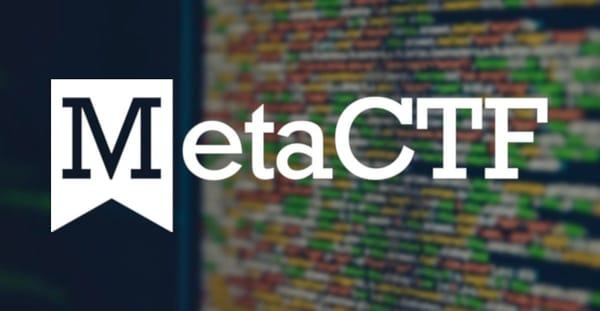The GlitchArc Publication Style Guide
The Official Publication Guide for GlitchArc

Welcome aboard and thanks again for choosing to share your knowledge with the cybersecurity community.
We are all about high quality cybersecurity content. From white hat investigations to interesting grey hat techniques. Absolutely no black hat stuff allowed.
We exist to help people all over the world learn about infosec, digital privacy, and the tools that keep systems secure. And your tutorials can play a big part in that.
This guide will walk you through how to make your tutorial as helpful and impactful as possible. So without further ado, let's jump in.
Depth over fluff
GlitchArc is not the place for quick thoughts or diary style ramblings.
Come with facts, come with screenshots, drop your payloads, packet captures, terminal commands, and anything else that will help explain the topic clearly.
We have observed that the more detailed and practical a tutorial is, the more people stick around to read it, and the more likely they are to share it with others.
If you can't get to at least 500 words, take a step back and do a bit more digging into your topic. There are some exceptions of course, like if you are breaking down a very specific attack vector or config tweak, but in general, more depth means more value.
Put the effort in, and your readers will get more out of it.
How to Present Your Tutorial Like a Pro
You are writing for people who are skimming dozens of tabs and probably dodging phishing emails on the side. Make your title count.
Plan your headline before you start writing, and everything you write should back it up clearly.
Deep technical guides are what GlitchArc readers are here for. Our audience is made up of ethical hackers, security engineers, and curious minds who want real depth.
Try using headlines like:
- "How to set up…"
- "How to install…"
- “How to [do something] with [tool]”
- "How [something] works"
- “What is [concept]?”
Avoid starting titles with an -ing verb. "How to Prevent SQL Injection Attacks" is much stronger than "Preventing SQL Injections". Same advice for subheadings inside your piece.
Also, try to use keywords people will search for, but do not go too crazy with it. A couple in the title and sprinkled naturally through the article is perfect.
Add a Feature Image
Once you have nailed your headline, give your article some visual appeal with a decent cover image. On Ghost, you will find the “Add feature image” option at the top of the post editor. That is where your cover image goes.
Avoid adding it under the post settings under the X or Facebook cards. That is just for social sharing previews and will not show up as the main image on your article.
If you are up for designing your own cover, Canva is a good shout. Just keep these tips in mind:
- Use the 1.91:1 aspect ratio so nothing important gets cropped when shared
- Keep the text minimal and centred. Think “Build a Python Keylogger” instead of dumping the whole title on the image
- Stick to bold colours and high contrast
- Avoid GIFS, they slow things down
- Simple works best. Go for clean, simple designs that are easy to read even on mobile
If design is not your thing, grab a free stock image from Unsplash or Pexels. No attribution needed.
AI-generated art is also allowed, as long as you have the right permissions. If we notice it is not according to standards, we will replace it and save your version somewhere safe just in case.
Set your Post URL
Before you submit your article, head to the settings panel (click the little panel icon in the top right) and give your post a clean, simple URL.
Short and descriptive is best. Go with something like how-to-use-nmap or understanding-sqli-attacks, not my-cybersecurity-journey-part-7-final. Think like a reader who is searching for the topic.
Avoid using unnecessary filler words. Keep it neat and relevant.
Choose Your Tags
Still in the settings menu, you will see a section labelled Tags. Tags help people find your post on boost your visibility across the site.
You can add up to five tags per tutorial. Just start typing one, and hit enter when the right option pops up. For example: Network Security, Penetration Testing, Malware, Cyber Awareness, or Linux.
The first tag is the most important. It becomes your tutorial’s main category label and shows up right above your article, so choose wisely.

If your post is about brute forcing, do not put Web as your top tag. We suggest you go with Offensive Security or something more spot-on.
NOTE: Do not change the other post settings in the panel. Changing those could significantly alter how your article shows up online.
Writing Tips to Keep Readers Hooked
Writing 101
Cybersecurity is already a complex topic. You don’t make your tutorials harder to read than they need to be. Here are a few quick tips to help your readers stay focused:
- Use simple language: You’re not writing an academic paper. Make your point in plain English.
- Use short sentences: If one sentence runs on for three lines, split it. Readers will thank you.
- Paragraphs should be small: Long blocks of text are painful on screen. Keep most paragraphs to two or three sentences max.
- No over-the-top punctuation: A single full stop usually does the trick. Don’t go wild with exclamation marks or semicolons.
- Use headings to organise: Every main point should have a clear heading. In Ghost, use ## for big topics and ### for smaller sections within.
- Tone down the formatting: A bit of bold or italics here and there is fine, but try not to flood the post with them.
- Spell things out: Write out the full phrase at least once. Say “Intrusion Detection System (IDS)” the first time, then use IDS after that.
- Get your capitals right: It’s PowerShell, not powershell. It’s MITM, not Mitm.
- No Abbreviations: Cut down on using words like 'etc..' or 'e.g'. Replace them with other terms such as 'like' or 'for example'.
- Stay on track: You’re here to teach something, so don’t wander too far off topic. Respect the reader’s time.
Write Like You Talk
You want your tutorial to feel clear and helpful rather than a college textbook. An Active voice helps with that. Let's take an example:
🟢 Active voice: Run the payload with this command.
🔴 Passive voice: The payload can be run using this command.
One feels like a guide. The other feels like a policy doc.
So, keep your sentences action-focused. Imagine you’re walking someone through it in real time. That energy comes across in your writing, and it builds trust.
Highlight Your Commands Properly
When you're explaining things like SQL injection, custom scripts, or command-line tools, you want your code to be easy to spot.
In Ghost, just hit 3 backticks (```) on your keyboard, paste your code in, and choose the language.
Need to show a quick command inside a sentence? Wrap it with one backtick on each side like this: sudo ufw enable.
Neat command snippets = happy readers.
How To Structure a Solid Tutorial
- Start strong: Write a short intro that tells readers what they’ll learn. For example, “In this tutorial, you’ll learn how to use Wireshark to analyse suspicious network traffic.”
- Mention any prerequisites: Do they need Kali Linux set up? Basic Linux command line skills? Say so up front.
- Guide them step by step: Whether you’re showing how to run a scan with OpenVAS or write a Python script for log parsing, explain each step clearly and in order.
- Use numbered steps if the process needs to be followed in a certain order. If not, just use clear subheadings that break things up.
- Go into detail: Don’t rush it. Show command outputs, screenshots, explain why each step matters, and share tips from your own experience. They want to learn from you after all.
- Wrap it up: Remind them what they just achieved. Even a quick summary like “You’ve now got a working intrusion detection setup” can help things sink in.
One Good Movie Beats a Series...At least in Writing
We’ve seen it many times that tutorials split into parts often get ignored after part one. No one wants to dig around looking for “part 3 of 6” just to understand a concept.
But if you write one detailed, no-fluff tutorial that covers everything , from setup, to exploit, to clean-up, people will actually sit with it.
Longer guides make readers feel like they’re getting something valuable. It’s the sort of content that gets saved for later, shared in forums and groups, or followed step by step in a VM lab.
So if you’re covering something big, go all in. The more complete it feels, the more people will engage.
Mind Your Language
Yeah, we know cybersecurity topics can get gritty. But let’s keep the tutorials friendly for all readers, even the younger ones getting into the field.
Avoid swearing, and skip the controversial memes. Keep things professional, even if you're writing about shady exploits.
If a post doesn’t align with our community standards, we’ll take it down and send you the full copy so you’ve still got it on record.
Respect Copyright
You can absolutely include your own screenshots, diagrams, or visuals. In fact, we encourage it. But if you didn’t create the image, make sure it’s something you’re allowed to use.
Sites like Pexels and Unsplash have no-attribution-needed images that work well. Just don’t hotlink from other websites. Rather, download the image and upload it straight to Ghost, so we can serve it through our own system. Keeps things fast and reliable.
And a quick heads-up: If your image helps explain something important, always add alt text. Screen reader users rely on it, and it’s a small thing that makes a big difference.
If You Didn’t Write It, Don’t Pretend You Did
Plagiarism isn’t just bad form. It’s a permanent ban from our publication.
So if you’re quoting someone’s blog, tutorial, or even repo, do the right thing: Cite it. Drop the link, format the quote, and give credit where it’s due.
Here's a good example:
"This approach to managing session tokens is both simple and effective."
~ Author Name
Source
If your tutorial is basically just a remix of someone else’s, pause and ask: Am I actually adding something new?
When in doubt, explain it in your own words. It’ll help you understand it better, and your readers will respect you more for it.
AI Can Help You Write, Not Be The Writer
Using AI tools like ChatGPT or Claude? Totally fine. They’re brilliant for brainstorming, testing ideas, or even helping you write cleaner code.
But here’s the deal: don’t just copy and paste an entire AI-written article and hit publish. That’s not what we’re here for.
Use AI to assist you, not replace you. Your context, your voice, and your real experience are what make your tutorial valuable, not a generic AI summary.
Also, test every command/code sample. Run it, format it properly, and make sure it works.
Fact-check your content. If you’re unsure about something, do the research. The internet’s already full of bad tutorials and AI slop. Let’s not add to it.
Take your time. We care more about quality than quantity.
Take a Break, Then Read It Out Loud
We get it. You're eager to hit publish. But before you do, take a breather.
Step away from your tutorial for 30 mins (yes, that long), then come back and read it like you're seeing it for the first time. Better yet, read it out loud. You’ll catch typos, awkward phrasing, and bits that just don’t flow.
Even the best writers need some initial editing. Proofreading isn't a nice-to-have, it's a necessity.
Think of it this way: if your tutorial helps someone script faster, find exploits smarter, or finally “get” the concept of injection attacks, it’s worth giving it that one extra pass.
Try Not to Overdo the Embeds
Yes, you can embed things like tweets and videos. Just type / on a new line and pick your embed.
But we ask that you use them sparingly. Here’s why:
- They slow things down, especially on slower connections
- They’re not always accessible for folks using screen readers
- They often don’t display right on mobile-optimised pages
Where You Publish Matters
We know you're proud of your work, and you should be! But try to resist the urge to post the same tutorial across multiple blogs and platforms.
Publishing in just one place helps more people find your article in search engines. Cross-posting to platforms like Medium or Hashnode actually confuse search engines and the algorithms will cut your reach.
A couple of exceptions:
- Posting on closed platforms (like LinkedIn) is totally fine.
- You can also feature your work on your personal blog. Just link back to the original using a canonical URL so Google knows where the main version lives and doesn't penalise you.
And if you've written related content on your own site, you can combine it into a longer, more useful tutorial for our community. We love in-depth guides.
How To Put Yourself on Promo
GlitchArc runs on community effort and transparency. We’re not into paid placements, and keeping things genuine helps us stay that way.
We absolutely understand you might want to give a shout to your latest book, course, or even your security tool. That’s cool, but keep it light. A single sentence at the end of your tutorial is the best place for it.
What we don’t want is someone kicking off a tutorial with a huge link drop. That just feels straight-up dodgy. And no affiliate links unless it’s something you’ve created yourself.
Quick heads-up: we don’t allow company-branded accounts, ghost writing, or moving articles between people at the same company. Tutorials should come from real people doing real work.
Oh, and since all external links on GlitchArc are do-follow, they can give your site a bit of SEO juice. Just don’t go overboard with it.
Additionally, we encourage you to add as many social links as you can to your personal profile so readers know where to contact or follow you.

Last but not least, its tradition on our site to have a 'glitch' effect on your profile. There are many tools do just this but we suggest using the Jitter effect from Mosh-Lite.
Final Steps Before Publishing
Once you’ve given your tutorial a final read and feel it’s in good shape, send us the draft link at editorial@glitcharc.com.
Our team will review it quickly, focusing on the title and intro first. We will also tidy up anything that’s off, like formatting or grammar issues. We want to help your work shine before it goes live.
If we reckon it needs more serious edits, we’ll send it back with notes. You can then make updates and resubmit when you’re happy with the changes.
Final Notes
Thanks for contributing to GlitchArc and helping build a stronger cybersecurity community. We hope this guide helps you write better content that reaches and helps more people.
See you soon.
— The GlitchArc Editorial Team




